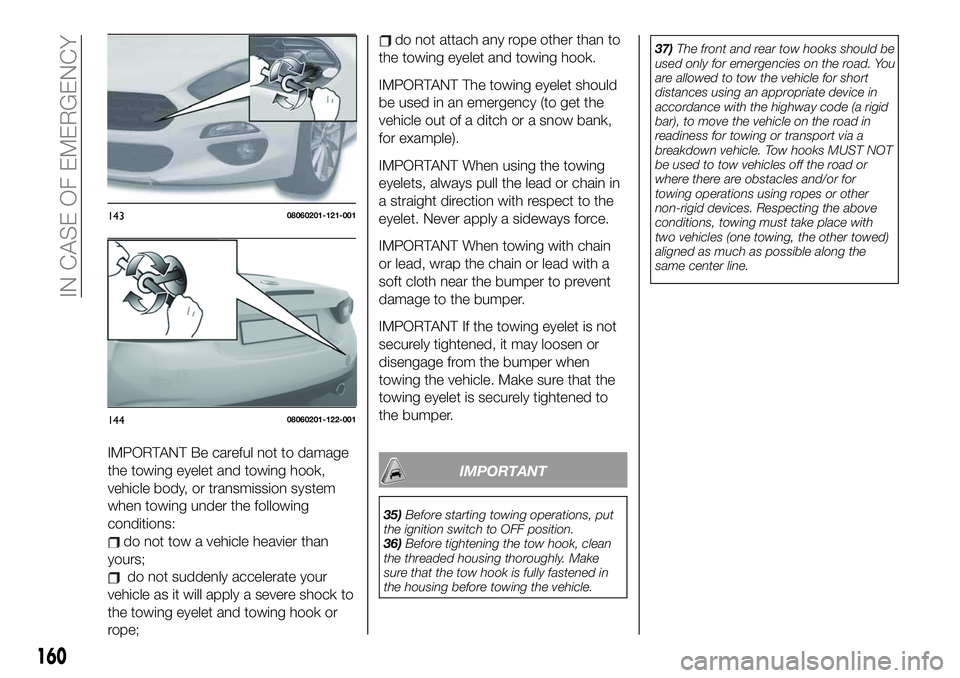IMPORTANT Be careful not to damage
the towing eyelet and towing hook,
vehicle body, or transmission system
when towing under the following
conditions:
do not tow a vehicle heavier than
yours;
do not suddenly accelerate your
vehicle as it will apply a severe shock to
the towing eyelet and towing hook or
rope;
do not attach any rope other than to
the towing eyelet and towing hook.
IMPORTANT The towing eyelet should
be used in an emergency (to get the
vehicle out of a ditch or a snow bank,
for example).
IMPORTANT When using the towing
eyelets, always pull the lead or chain in
a straight direction with respect to the
eyelet. Never apply a sideways force.
IMPORTANT When towing with chain
or lead, wrap the chain or lead with a
soft cloth near the bumper to prevent
damage to the bumper.
IMPORTANT If the towing eyelet is not
securely tightened, it may loosen or
disengage from the bumper when
towing the vehicle. Make sure that the
towing eyelet is securely tightened to
the bumper.
IMPORTANT
35)Before starting towing operations, put
the ignition switch to OFF position.
36)Before tightening the tow hook, clean
the threaded housing thoroughly. Make
sure that the tow hook is fully fastened in
the housing before towing the vehicle.37)The front and rear tow hooks should be
used only for emergencies on the road. You
are allowed to tow the vehicle for short
distances using an appropriate device in
accordance with the highway code (a rigid
bar), to move the vehicle on the road in
readiness for towing or transport via a
breakdown vehicle. Tow hooks MUST NOT
be used to tow vehicles off the road or
where there are obstacles and/or for
towing operations using ropes or other
non-rigid devices. Respecting the above
conditions, towing must take place with
two vehicles (one towing, the other towed)
aligned as much as possible along the
same center line.
14308060201-121-001
14408060201-122-001
160
IN CASE OF EMERGENCY
